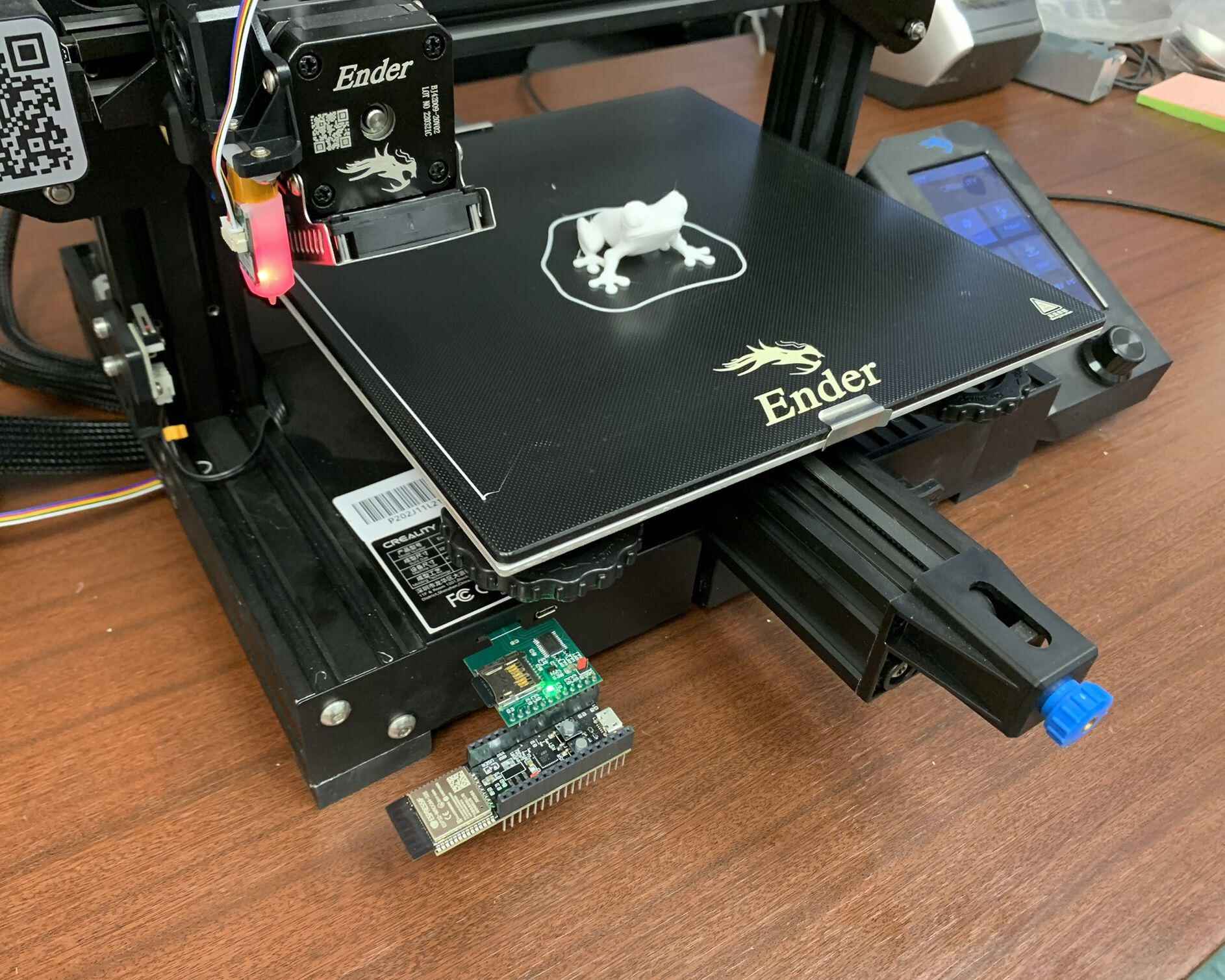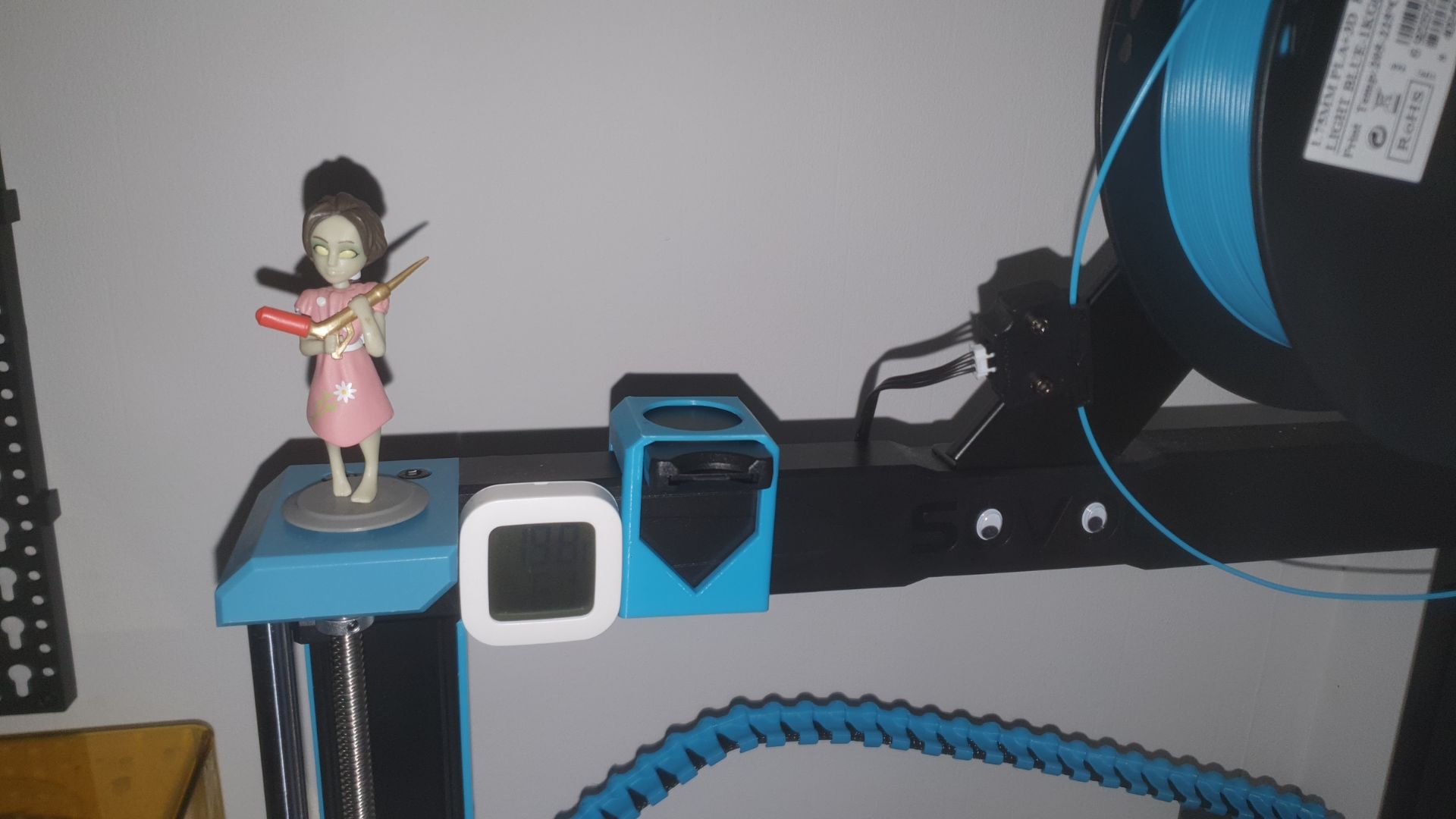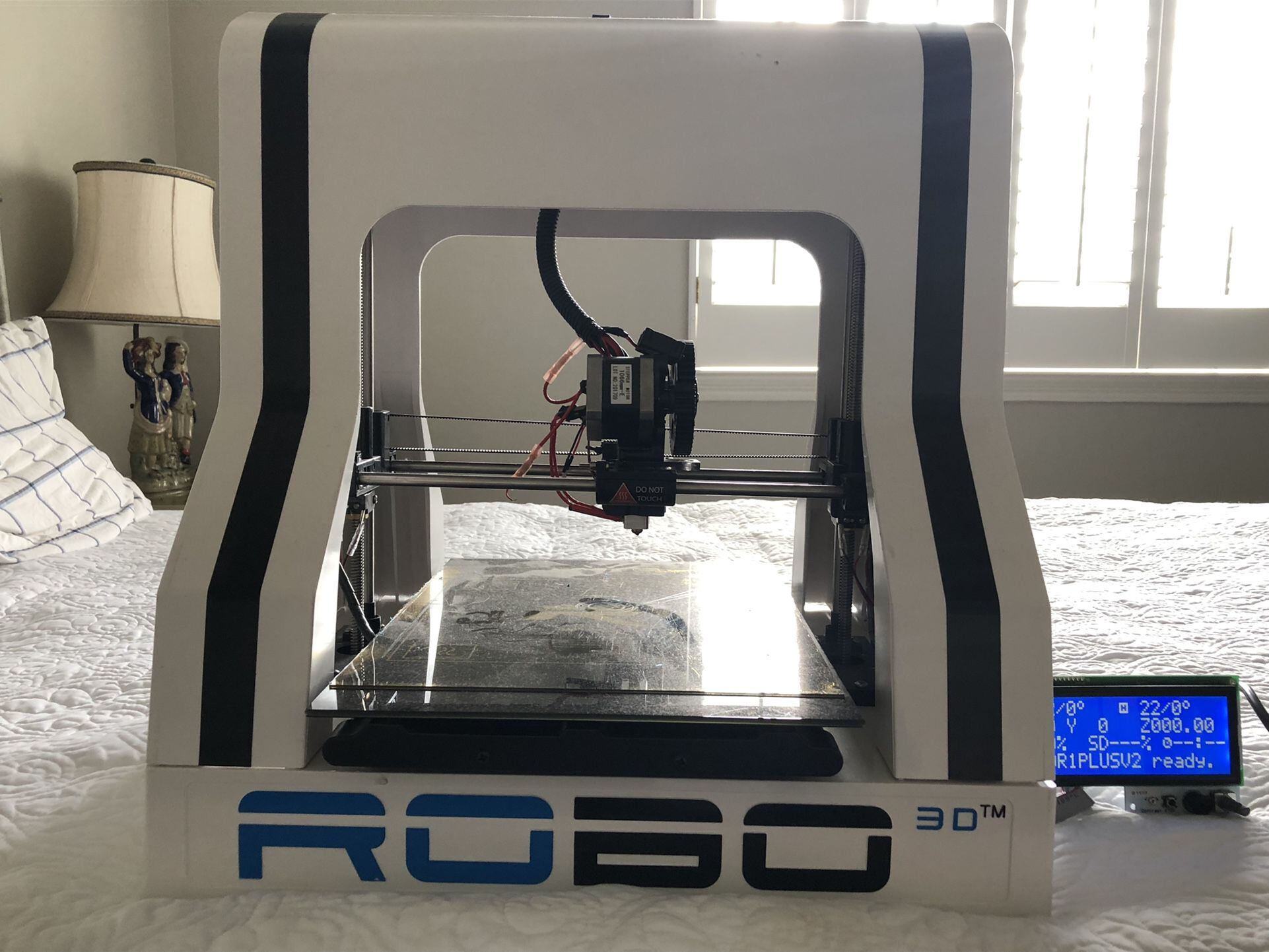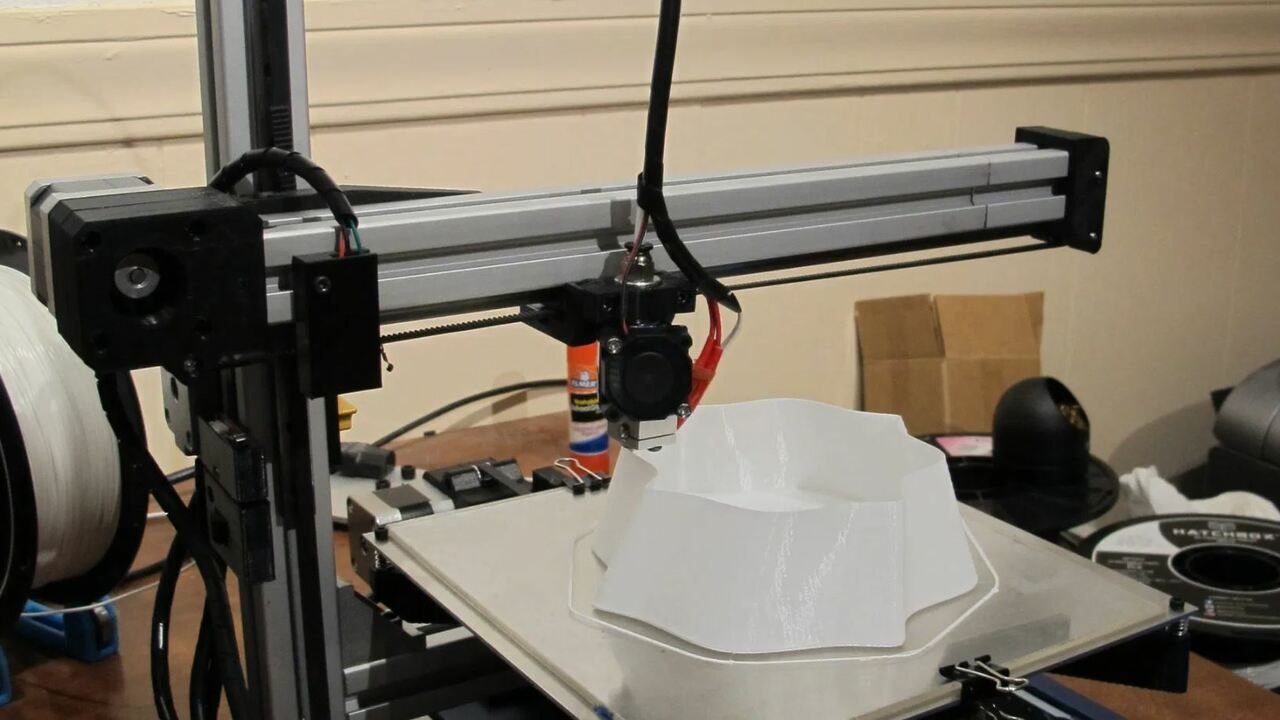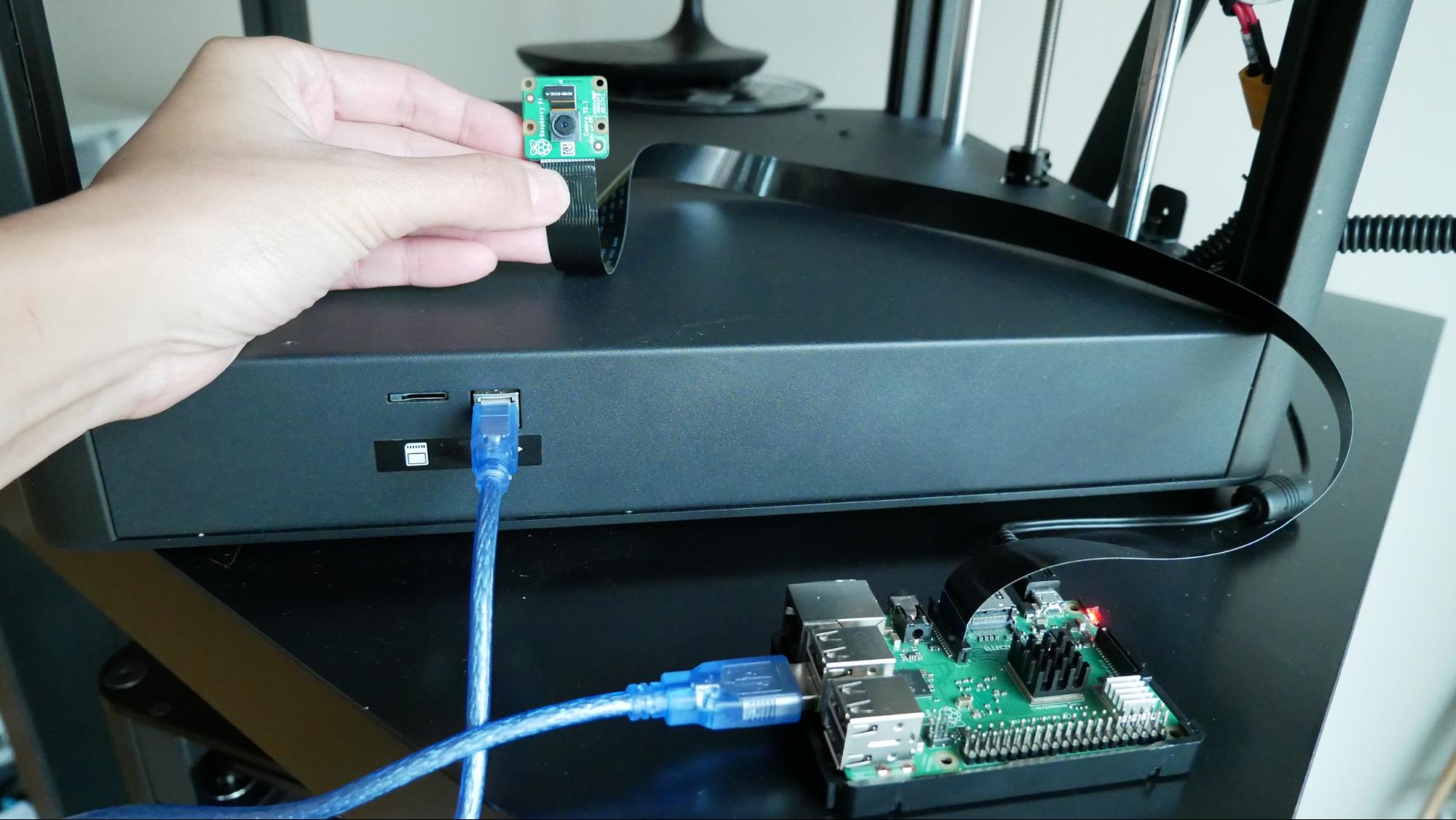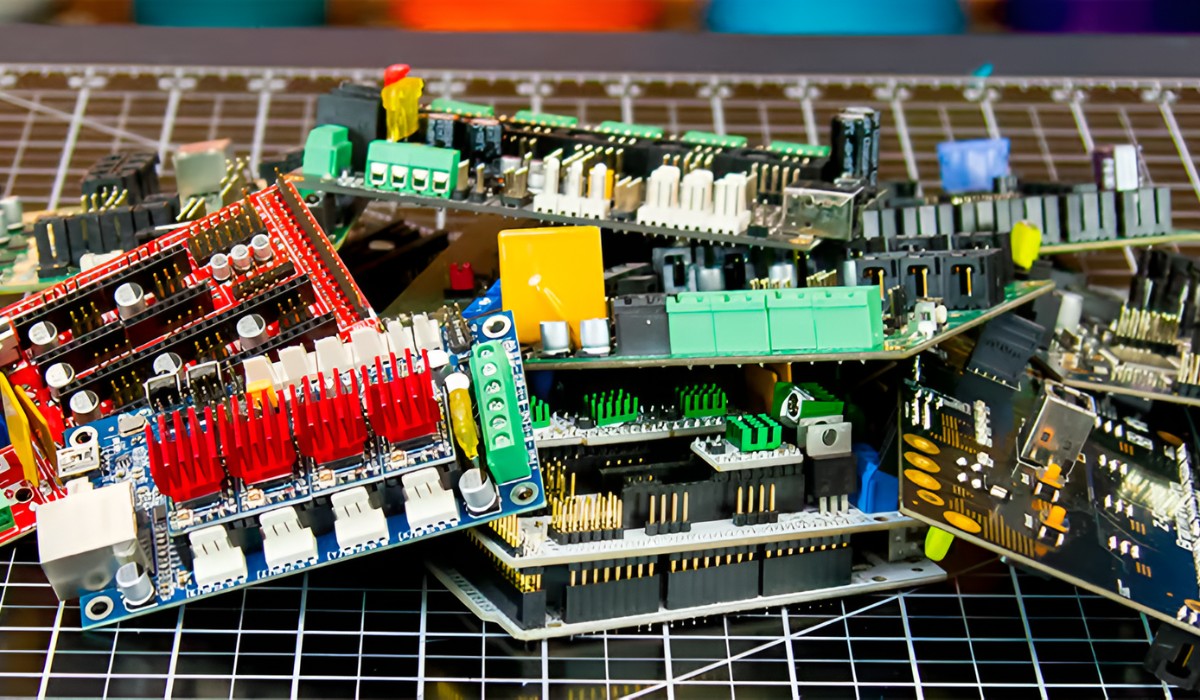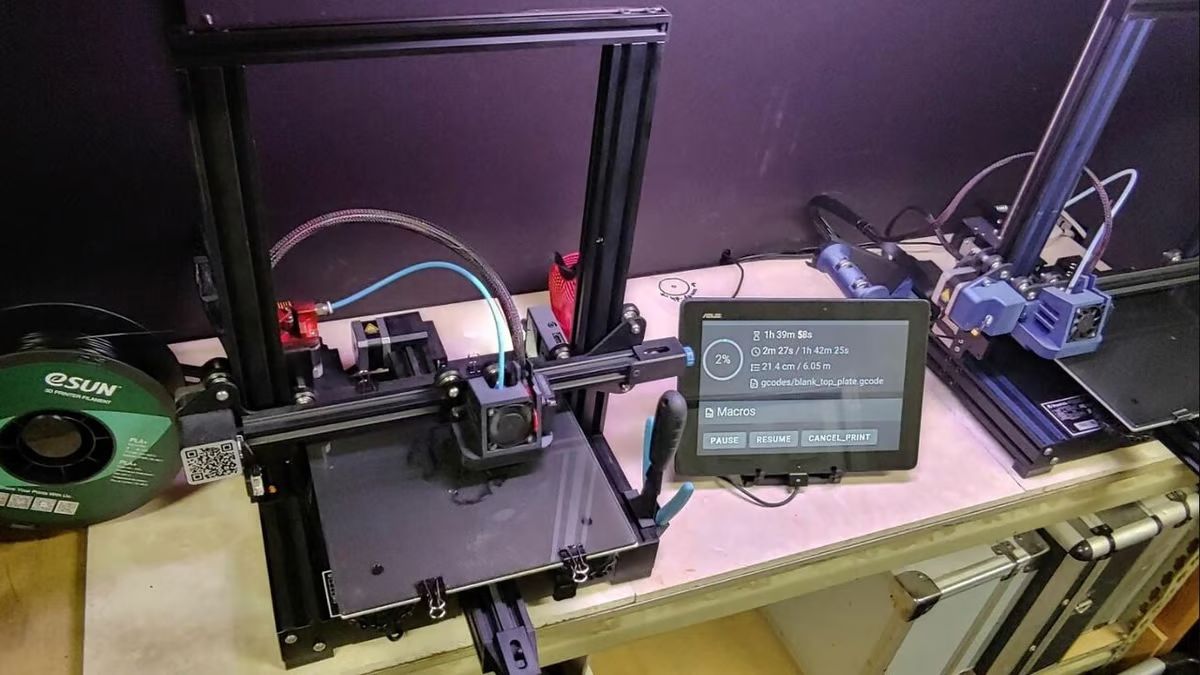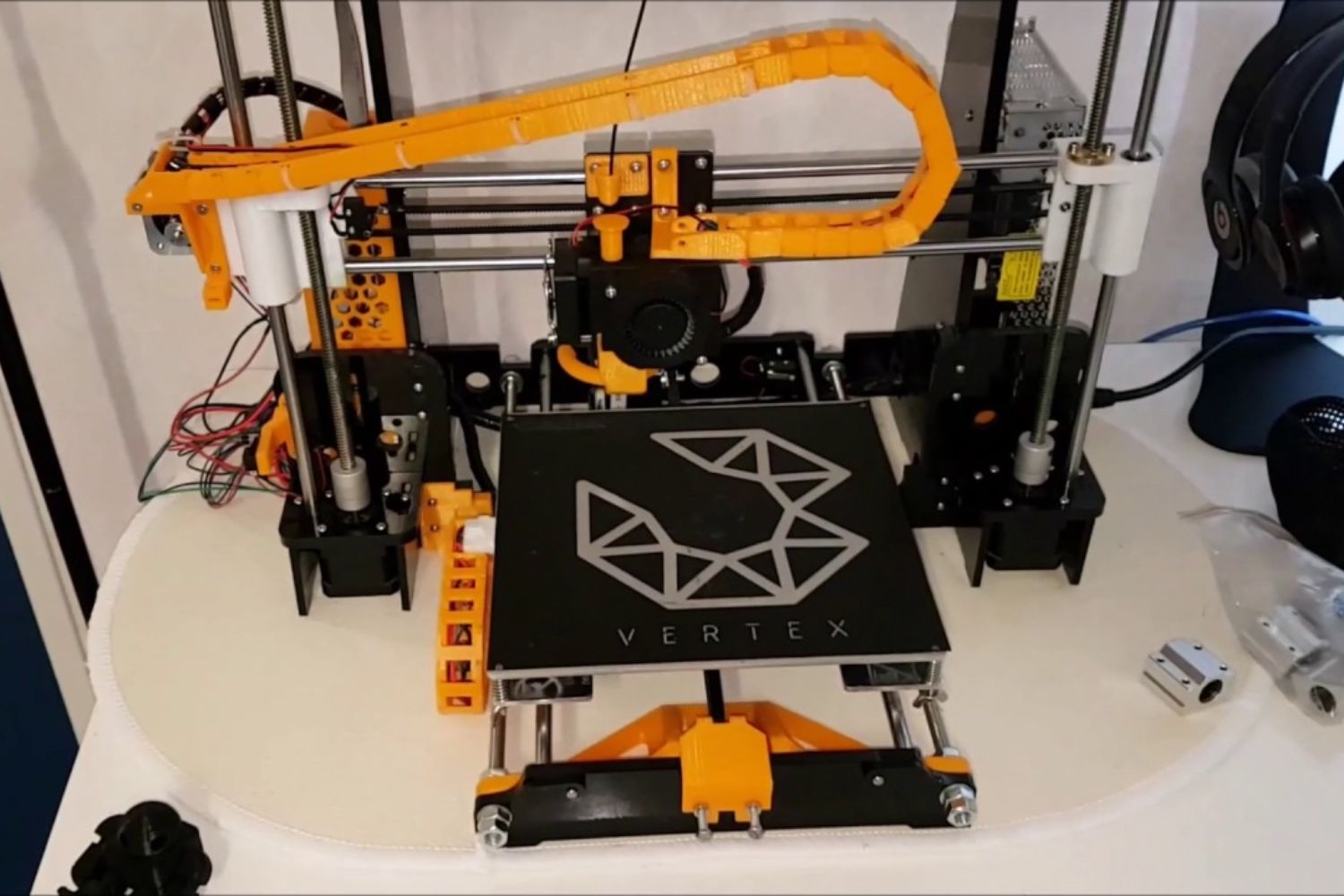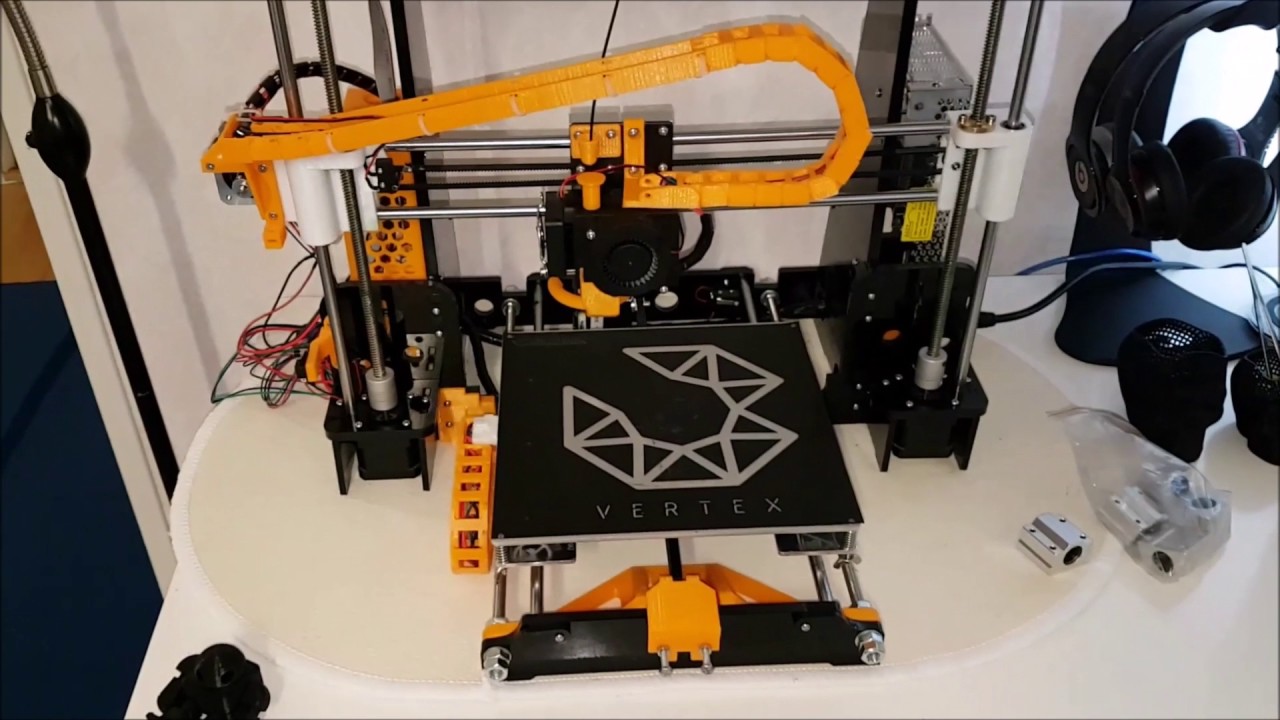What is an SD Card?
An SD (Secure Digital) card is a small, portable storage device used to store and transfer data. It is widely used in various devices, including digital cameras, smartphones, and 3D printers. The SD card is named for its ability to securely store data and provide a high level of reliability and durability.
SD cards utilize flash memory technology, which allows for non-volatile storage, meaning that the data remains intact even when the power is turned off. This makes SD cards an ideal choice for storing important files and transferring data between devices.
The physical size of an SD card can vary, with the most common types being standard SD cards, mini SD cards, and micro SD cards. However, all of these cards have the same functionality and can be used interchangeably with the appropriate adapter.
One of the key features of an SD card is its storage capacity. SD cards come in various sizes, ranging from a few gigabytes (GB) to several terabytes (TB). The storage capacity determines how much data the card can hold, including 3D models, firmware updates, and other files necessary for 3D printing.
In addition to storage capacity, SD cards also have a speed rating that indicates how quickly data can be read from or written to the card. The speed rating is denoted by the Class number, which ranges from Class 2 (slowest) to Class 10 (fastest). It is important to choose an SD card with an appropriate speed rating for a 3D printer to ensure smooth and efficient printing.
In summary, an SD card is a versatile storage device used in various electronic devices. Its compact size, reliability, and large storage capacity make it an essential component for 3D printers. When choosing an SD card for your 3D printer, consider the storage capacity and speed rating to meet your printing needs efficiently.
How does an SD Card Work?
Understanding how an SD (Secure Digital) card works is essential for maximizing its usage in a 3D printer. SD cards utilize a sophisticated architecture and protocols to enable data storage and transfer. Let’s take a closer look at the inner workings of an SD card.
At the heart of an SD card is the flash memory chip. This chip consists of numerous memory cells that store data in the form of electrical charges. Each memory cell can represent a binary digit (bit), either a 0 or a 1. These bits are organized into larger units called bytes, which collectively form the data stored on the SD card.
To read data from an SD card, the 3D printer sends an instruction via the SD card interface. This instruction specifies the address of the data to be read and triggers the necessary processes to retrieve it. The SD card controller, a component within the card, then accesses the desired memory cells and transfers the data back to the printer.
Similarly, when writing data to an SD card, the printer sends a write instruction along with the data to be stored. The card controller receives this instruction and writes the data into the appropriate memory cells. It’s worth noting that the process of writing data to flash memory involves erasing the existing contents of the target memory cells before writing the new data. This process ensures the reliability and integrity of the stored data.
To ensure the security and integrity of data communication, SD cards implement various error correction and encryption techniques. These techniques detect and correct errors that may occur during data transmission, minimizing the risk of data corruption or loss. In addition, some SD cards feature built-in encryption capabilities, providing an extra layer of protection for sensitive data.
Interfacing with an SD card in a 3D printer is typically done through the SPI (Serial Peripheral Interface) protocol. SPI is a widely adopted communication protocol that allows high-speed data transfer between the printer and the SD card. The printer sends commands and data to the card using a series of electrical signals, allowing for efficient and reliable data exchange.
In summary, an SD card uses flash memory technology and a complex architecture to store and transfer data. By understanding the inner workings of an SD card, you can make informed decisions when choosing and utilizing an SD card with your 3D printer, ensuring smooth and successful printing operations.
SD Card Capacity
The storage capacity of an SD (Secure Digital) card plays a crucial role in determining how much data can be stored on the card. When it comes to 3D printers, having sufficient storage capacity is essential for storing 3D models, firmware updates, and other necessary files. Let’s delve into the different capacity options available for SD cards.
SD cards come in various sizes, typically ranging from a few gigabytes (GB) to several terabytes (TB). The capacity of an SD card refers to the amount of digital information it can hold. One gigabyte is equal to one billion bytes, while one terabyte is equivalent to one trillion bytes. The higher the capacity, the more data the SD card can accommodate.
When choosing the right SD card capacity for your 3D printer, consider the size of the 3D models you typically work with and the frequency of your printing projects. Smaller models and occasional printing may not require a large capacity SD card, whereas larger models and frequent printing may necessitate a higher capacity card.
It’s important to note that the usable storage capacity of an SD card is slightly less than its advertised capacity. This is due to the way digital storage is calculated, where manufacturers use base 10 (decimal) calculations and computer systems use base 2 (binary) calculations. As a result, a portion of the storage capacity is reserved for file system information, formatting, and other overhead.
To determine the appropriate SD card capacity for your 3D printer, consider the average size of your 3D models and the amount of additional data you need to store, such as firmware updates or calibration files. It’s generally recommended to choose an SD card with a capacity that allows for expansion and flexibility, avoiding the need to frequently delete files to free up space.
In summary, the storage capacity of an SD card is an important factor to consider when using it with a 3D printer. By choosing a capacity that aligns with your printing needs, you can ensure you have ample space to store your 3D models and other necessary files, allowing for smooth and uninterrupted printing operations.
Types of SD Cards
SD (Secure Digital) cards come in various types, each with its own physical size and compatibility specifications. Understanding the different types of SD cards is crucial when selecting the right one for your 3D printer. Let’s explore the common types of SD cards available in the market.
1. Standard SD Card: The standard SD card, also known as SDSC (SD Standard Capacity), is the original form factor of SD cards. It has a rectangular shape and is commonly used in digital cameras, older smartphones, and other devices that require larger storage capacity. The standard SD card typically has a maximum capacity of 2GB.
2. Mini SD Card: The mini SD card, also known as SDMC (SD Mini Card), is a smaller version of the standard SD card. It was introduced to address the need for smaller storage solutions in compact devices. While not commonly used today, some older devices may still require a mini SD card. It has a maximum capacity of 2GB.
3. Micro SD Card: The micro SD card, also known as SDHC (SD High Capacity) or SDXC (SD eXtended Capacity), is the smallest form factor of SD cards. It is commonly used in smartphones, tablets, and other portable devices. Micro SD cards have become the standard for modern electronic devices due to their compact size and compatibility. They are available in various capacities, ranging from a few gigabytes to several terabytes.
4. SDHC, SDXC, and UHS-I / UHS-II SD Cards: These are variants of the micro SD card that offer higher capacities and faster transfer speeds. SDHC (SD High Capacity) cards have capacities between 4GB and 32GB, while SDXC (SD eXtended Capacity) cards have capacities ranging from 64GB to 2TB. UHS-I and UHS-II refer to the Ultra High-Speed bus interface, which enables faster data transfer between the card and the device.
It’s important to note that while most modern devices support micro SD cards, they may require an adapter to use standard SD cards or mini SD cards. These adapters allow for compatibility across different form factors, making it easier to use SD cards with a variety of devices.
In summary, SD cards are available in different types to accommodate various devices’ needs. When selecting an SD card for your 3D printer, consider the compatibility requirements of your device and choose the appropriate type and capacity to ensure seamless operation and optimal storage capabilities.
Choosing the Right SD Card for a 3D Printer
Selecting the right SD (Secure Digital) card for your 3D printer is crucial for smooth and efficient printing operations. Here are some key factors to consider when choosing an SD card for your 3D printer.
1. Storage Capacity: Consider the storage capacity you need based on the size and number of 3D models you typically work with. It’s advisable to choose an SD card with a capacity that allows for future expansion, avoiding the need to frequently delete files.
2. Speed Rating: Look for an SD card with a high-speed rating, denoted by the Class number (e.g., Class 10). This ensures fast data transfer between the SD card and the 3D printer, minimizing potential bottlenecks during printing.
3. Reliability: Opt for a reliable SD card from reputable brands. Look for cards that offer durability, resistance to shock and vibrations, and are designed for consistent performance in demanding environments.
4. Compatibility: Ensure the SD card is compatible with your 3D printer. Familiarize yourself with the supported SD card types and capacities specified in your printer’s documentation.
5. File System Format: Check whether your 3D printer requires a specific file system format (e.g., FAT32). Make sure the SD card is formatted correctly to ensure seamless communication between the card and the printer.
6. Brand Reputation and Warranty: Consider well-established SD card brands known for their quality and reliability. Look for cards that come with a warranty, providing peace of mind in case of any issues.
7. Price: Compare prices among different SD card options, considering the storage capacity and features offered. Be cautious of overly cheap options, as they may compromise on quality and performance.
By carefully considering these factors, you can choose an SD card that meets your 3D printing needs and ensures a seamless printing experience without data transfer issues or file storage limitations.
Inserting an SD Card into a 3D Printer
Inserting an SD (Secure Digital) card into a 3D printer is a straightforward process that allows you to access and load your 3D models for printing. Here are the steps to follow when inserting an SD card into a 3D printer.
1. Power Off the Printer: Before inserting or removing the SD card, ensure that the 3D printer is powered off. This prevents any potential data corruption or damage to the card or printer.
2. Locate the SD Card Slot: Identify the SD card slot on your printer’s control panel or main unit. It is typically a rectangular slot labeled “SD Card” or with a familiar SD card symbol.
3. Prepare the SD Card: If your SD card has a protective case or adapter, remove it. Hold the SD card by its edges to avoid touching the metal connectors or the exposed circuitry on the card.
4. Align and Insert the SD Card: Align the metal contacts on the SD card with the corresponding contacts in the SD card slot. Make sure the card is oriented correctly, as inserting it in the wrong direction may damage both the card and the SD card slot. Gently push the card into the slot until it clicks into place.
5. Power On the Printer: Once the SD card is securely inserted, power on the 3D printer. The printer’s system will detect the presence of the SD card and initialize it for use.
6. Accessing the SD Card: Depending on the printer’s interface, navigate to the appropriate menu or screen to access the contents of the SD card. This allows you to select and load the desired 3D model for printing.
7. Removing the SD Card: When you are finished using the SD card or need to swap it for a different one, ensure the printer is powered off. Press the SD card gently to disengage it from the slot, and then carefully pull it out.
It is important to handle the SD card with care, avoiding exposure to static electricity, liquids, or extreme temperatures. Additionally, always follow the manufacturer’s instructions and guidelines regarding the usage and handling of SD cards specific to your 3D printer model.
Troubleshooting SD Card Issues
While SD (Secure Digital) cards are generally reliable, they can occasionally encounter issues that affect their functionality with a 3D printer. Here are some common SD card problems and troubleshooting steps to resolve them.
1. Incompatibility: If the 3D printer fails to recognize the SD card, ensure it is compatible with the printer’s specifications. Check the supported card types and capacities specified in the printer’s documentation. Consider formatting the card in the correct file system format, such as FAT32, if required.
2. Corrupted Data: If you experience print errors or erratic behavior, it could be due to corrupted data on the SD card. Try formatting the SD card using your computer or the printer’s formatting function. However, always ensure you have a backup of important files before formatting.
3. Dirty Contacts: Dust, dirt, or debris on the metal contacts of the SD card or the SD card slot can interfere with proper data transfer. Carefully clean the contacts using a soft, lint-free cloth or a cotton swab dipped in isopropyl alcohol. Gently insert and remove the card a few times to help clean the contacts.
4. Insufficient Storage: If you encounter issues when trying to save or load files, check if the SD card has sufficient storage space available. Delete unnecessary files or consider using a higher capacity SD card to avoid running out of space during printing operations.
5. Physical Damage: Inspect the SD card for any visible physical damage, such as cracks or bent pins. Damaged cards may not function properly and should be replaced.
6. Update Firmware: Check if your 3D printer has a firmware update available. Updating the firmware can address compatibility issues and improve SD card performance.
7. Try a Different SD Card: If all else fails, test the printer with a different SD card to determine if the issue is specific to the card or the printer. This can help identify the source of the problem and guide you in finding an appropriate solution.
Remember to always handle SD cards with care, avoiding excessive bending or dropping. Additionally, make sure to follow proper insertion and removal procedures to prevent damage to the card or the SD card slot. Consulting the manufacturer’s documentation or contacting customer support can provide further assistance in troubleshooting SD card issues specific to your 3D printer model.
Tips for Using SD Cards with a 3D Printer
To optimize the usage of an SD (Secure Digital) card with your 3D printer and ensure smooth printing operations, here are some helpful tips to keep in mind:
1. Backup Your Files: Regularly back up your important 3D models and other files stored on the SD card. This ensures you have a copy in case of accidental deletion, corruption, or loss.
2. Organize Your Files: Keep your files organized on the SD card to easily locate and load the desired 3D model for printing. Create folders or use a naming convention that reflects the design or project to enhance efficiency.
3. Safe Eject: Properly eject the SD card from your computer or other devices using the operating system’s safe eject option. This ensures that all pending write operations are completed before removing the card to prevent data corruption.
4. Avoid Removing During Printing: Avoid removing the SD card while a print job is in progress. Removing the card may disrupt the data flow and result in a failed print. Wait until the print job is complete and the printer is idle before removing the card.
5. Keep Cards Clean and Dry: Protect your SD cards from dust, dirt, and moisture, as they can interfere with data transfer and damage the card. Store them in a clean and dry environment when not in use.
6. Consider Using Multiple Cards: If you frequently work with a variety of 3D models or have multiple ongoing projects, it may be beneficial to have multiple SD cards dedicated to specific projects or types of prints. This allows for faster and more convenient access to the files you need.
7. Upgrade to a Higher-Speed Card: If you experience slow data transfer between the SD card and the printer, consider upgrading to a higher-speed card. This can help reduce loading times and improve overall printing efficiency.
8. Periodic Formatting: Occasionally format the SD card to maintain its performance and ensure optimal data storage. Formatting erases all data from the card, so make sure to back up any important files before proceeding.
By following these tips, you can ensure a reliable and efficient experience when using SD cards with your 3D printer. Regular maintenance and good practices will help prolong the lifespan of the SD card and minimize any potential issues during printing operations.







